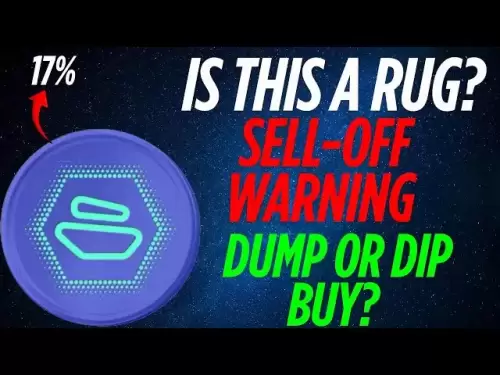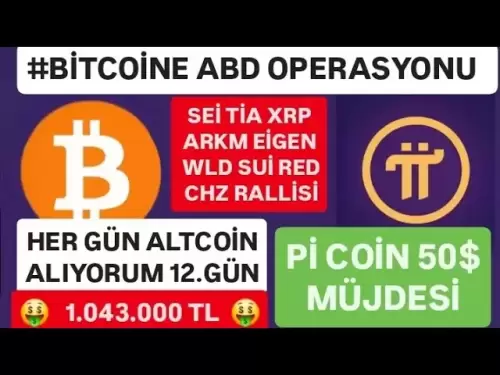-
 Bitcoin
Bitcoin $108,372.1298
-0.55% -
 Ethereum
Ethereum $2,549.7665
-0.43% -
 Tether USDt
Tether USDt $1.0001
-0.02% -
 XRP
XRP $2.2668
0.15% -
 BNB
BNB $661.8926
0.04% -
 Solana
Solana $149.5390
-1.02% -
 USDC
USDC $1.0000
0.00% -
 TRON
TRON $0.2869
-0.06% -
 Dogecoin
Dogecoin $0.1682
-1.63% -
 Cardano
Cardano $0.5809
-0.54% -
 Hyperliquid
Hyperliquid $38.7585
-2.29% -
 Bitcoin Cash
Bitcoin Cash $498.8712
0.61% -
 Sui
Sui $2.8706
-0.68% -
 Chainlink
Chainlink $13.4034
-0.31% -
 UNUS SED LEO
UNUS SED LEO $9.0486
0.29% -
 Stellar
Stellar $0.2477
-2.20% -
 Avalanche
Avalanche $17.9961
-1.58% -
 Shiba Inu
Shiba Inu $0.0...01164
-1.20% -
 Toncoin
Toncoin $2.7375
-3.59% -
 Hedera
Hedera $0.1579
-0.68% -
 Litecoin
Litecoin $86.0403
-1.42% -
 Monero
Monero $314.2818
-1.80% -
 Polkadot
Polkadot $3.3750
-0.32% -
 Dai
Dai $1.0001
0.02% -
 Ethena USDe
Ethena USDe $1.0002
0.02% -
 Bitget Token
Bitget Token $4.3114
-3.24% -
 Uniswap
Uniswap $7.4221
0.39% -
 Aave
Aave $283.8337
-0.92% -
 Pepe
Pepe $0.0...09956
-0.38% -
 Pi
Pi $0.4581
-1.07%
What is the minimum order size for Bitfinex trading pairs?
Understanding minimum order sizes on Bitfinex is crucial for traders to plan strategies effectively, as these sizes vary by trading pair and can impact trade execution.
Apr 23, 2025 at 11:28 am
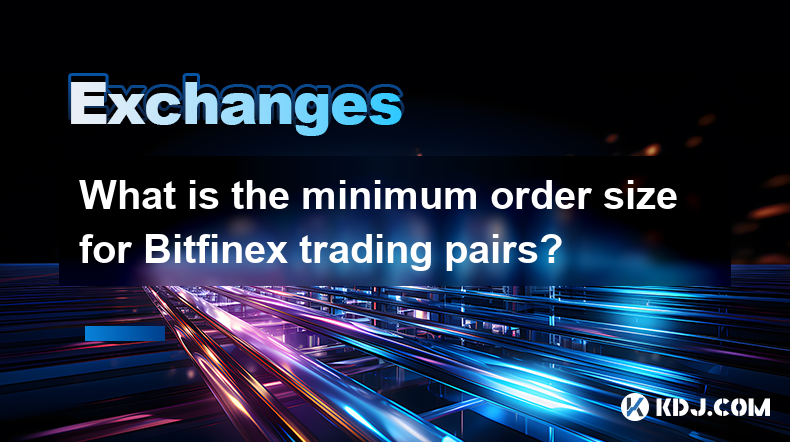
When engaging with the cryptocurrency trading platform Bitfinex, one of the key considerations for traders is understanding the minimum order size for various trading pairs. This parameter is essential as it dictates the smallest amount of a cryptocurrency that can be bought or sold in a single transaction. The minimum order size varies depending on the trading pair, and knowing these specifics can help traders plan their strategies effectively.
Understanding Minimum Order Size
The minimum order size on Bitfinex refers to the smallest unit of a cryptocurrency that a trader can execute in a trade. This size is determined by the platform to ensure smooth operations and liquidity. Different trading pairs have different minimum order sizes, which are set to balance the needs of both retail and institutional traders.
Factors Influencing Minimum Order Size
Several factors influence the minimum order size on Bitfinex. Liquidity is a primary factor; pairs with higher liquidity can often have smaller minimum order sizes. Volatility also plays a role, as more volatile assets might require larger minimum order sizes to mitigate risks. Additionally, market conditions and regulatory requirements can affect these sizes, ensuring that the platform remains compliant and efficient.
How to Check Minimum Order Size on Bitfinex
To check the minimum order size for a specific trading pair on Bitfinex, follow these steps:
- Log into your Bitfinex account.
- Navigate to the trading section of the platform.
- Select the trading pair you are interested in.
- Look for the order form where you will see the minimum order size displayed for that pair.
This information is crucial for planning your trades and ensuring that your orders meet the platform's requirements.
Examples of Minimum Order Sizes for Popular Trading Pairs
Here are some examples of minimum order sizes for popular trading pairs on Bitfinex:
- BTC/USD: The minimum order size is typically 0.0001 BTC.
- ETH/USD: The minimum order size is often 0.01 ETH.
- LTC/USD: The minimum order size is usually 0.1 LTC.
- XRP/USD: The minimum order size is commonly 10 XRP.
These values can change, so it's always important to check the current minimum order size before placing a trade.
Impact of Minimum Order Size on Trading Strategies
The minimum order size can significantly impact trading strategies. For day traders, who often engage in multiple trades throughout the day, understanding the minimum order size is crucial for executing quick and efficient trades. Swing traders and long-term investors might be less affected by these minimums, but they still need to consider them when planning larger trades.
For example, if a trader wants to buy a small amount of Bitcoin to test the market, they need to ensure that their order meets the minimum order size of 0.0001 BTC. If their intended purchase is smaller, they will need to adjust their strategy accordingly.
Adjusting to Minimum Order Sizes
Traders can adjust their strategies to accommodate the minimum order sizes on Bitfinex. Here are some tips:
- Batch Orders: If the minimum order size is too large for your intended trade, consider batching multiple smaller orders into one that meets the minimum requirement.
- Diversify: If a particular trading pair has a high minimum order size, consider diversifying your portfolio with other pairs that have lower minimums.
- Use Limit Orders: Placing limit orders can help you control the price at which you buy or sell, ensuring that you meet the minimum order size while also achieving your desired entry or exit point.
Importance of Staying Updated
Staying updated on the minimum order sizes for different trading pairs on Bitfinex is essential. These sizes can change due to various factors, including updates to the platform, changes in market conditions, or shifts in regulatory environments. Regularly checking the minimum order sizes ensures that your trading strategies remain effective and compliant with Bitfinex's requirements.
Frequently Asked Questions
Q: Can the minimum order size change over time on Bitfinex?
A: Yes, the minimum order size can change over time due to factors such as liquidity, market conditions, and regulatory updates. It's important for traders to regularly check these sizes to ensure their trading strategies remain effective.
Q: What happens if I try to place an order below the minimum order size on Bitfinex?
A: If you attempt to place an order below the minimum order size, Bitfinex will not execute the order. You will receive an error message indicating that the order size is too small, and you will need to adjust your order to meet the minimum requirement.
Q: Are there any trading pairs on Bitfinex with no minimum order size?
A: No, all trading pairs on Bitfinex have a minimum order size. This is to ensure smooth operations and liquidity on the platform. Traders must always check and adhere to these minimums when placing orders.
Q: How can I find out the minimum order size for a new trading pair added to Bitfinex?
A: To find the minimum order size for a new trading pair on Bitfinex, follow the same steps as checking for existing pairs. Log into your account, navigate to the trading section, select the new trading pair, and look at the order form where the minimum order size will be displayed.
Disclaimer:info@kdj.com
The information provided is not trading advice. kdj.com does not assume any responsibility for any investments made based on the information provided in this article. Cryptocurrencies are highly volatile and it is highly recommended that you invest with caution after thorough research!
If you believe that the content used on this website infringes your copyright, please contact us immediately (info@kdj.com) and we will delete it promptly.
- Ethereum, Exchanges, and Price Resilience: Navigating the Crypto Landscape
- 2025-07-08 08:30:13
- From Coin Flips to Cityscapes: How Names, Parks, and Planting Shaped St. Albert
- 2025-07-08 08:50:12
- Meme Coins for the Long Haul: Investing Beyond the Hype
- 2025-07-08 08:30:13
- Bitcoin, Investment, Safe Buy: Navigating the Crypto Landscape in 2025
- 2025-07-08 06:30:12
- DegeCoin, Solana, and Meme Tokens: Riding the Wave or a Wipeout?
- 2025-07-08 07:10:12
- Brett Price, Arctic Pablo, and Meme Coins: What's the Hype?
- 2025-07-08 06:50:12
Related knowledge

How to recover a lost Binance account
Jul 07,2025 at 09:07pm
What Happens When a Binance Account Is Lost?Losing access to your Binance account can be a distressing experience, especially if you hold significant digital assets. This typically occurs due to forgotten login credentials, loss of two-factor authentication (2FA) devices, or compromised accounts. Understanding the exact reason behind losing access is cr...
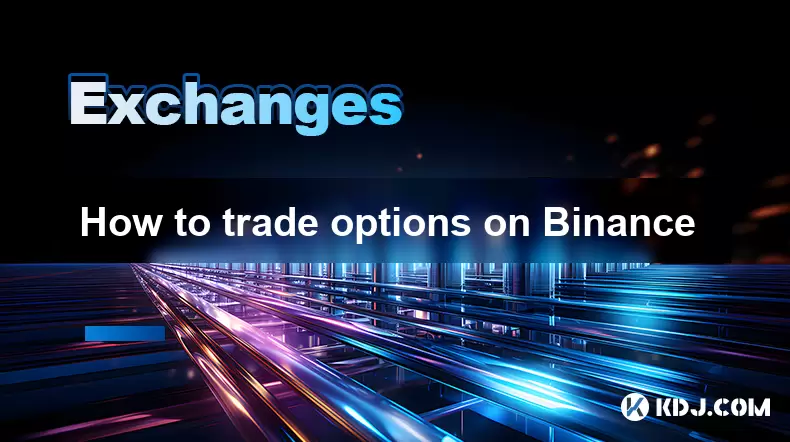
How to trade options on Binance
Jul 08,2025 at 04:35am
Understanding Options Trading on BinanceOptions trading allows investors to speculate on the future price of an asset without owning it. On Binance, users can trade crypto options, which are derivative contracts that give traders the right—but not the obligation—to buy or sell a cryptocurrency at a predetermined price before a specific date. This form o...
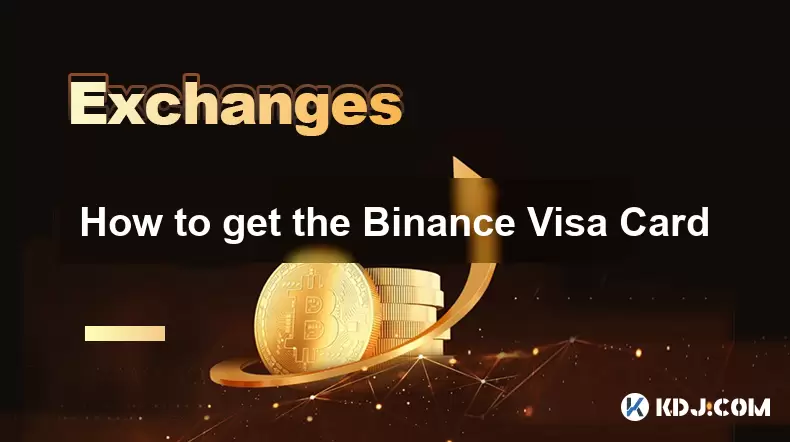
How to get the Binance Visa Card
Jul 08,2025 at 07:36am
What Is the Binance Visa Card?The Binance Visa Card is a cryptocurrency-linked payment solution that allows users to spend their digital assets in everyday transactions. Whether you're purchasing groceries, booking travel, or shopping online, this card enables seamless integration of crypto into your financial lifestyle. Unlike traditional debit or cred...

How to read Binance charts
Jul 07,2025 at 08:14pm
Understanding the Basics of Binance ChartsReading Binance charts effectively is essential for making informed trading decisions in the cryptocurrency market. Before diving into technical indicators and candlestick patterns, it's important to understand the basic layout of a chart on the Binance platform. The default chart interface displays price moveme...
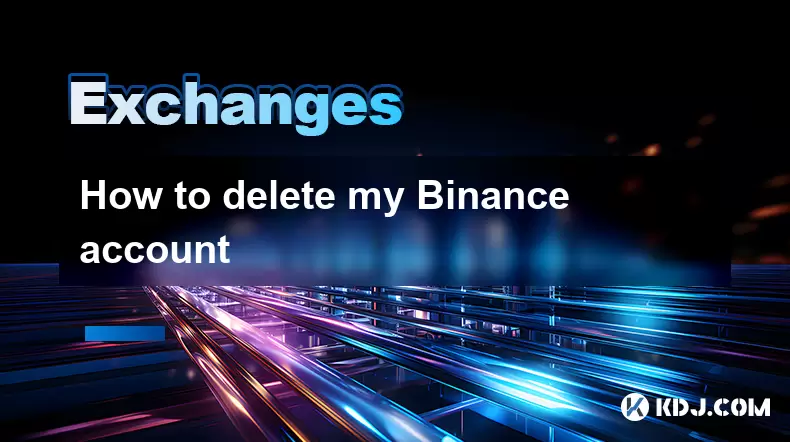
How to delete my Binance account
Jul 08,2025 at 06:35am
How to Delete My Binance AccountIf you're considering deleting your Binance account, it's important to understand the process thoroughly. Binance is one of the largest cryptocurrency exchanges globally, and permanently closing your account involves several steps. This guide will walk you through each necessary action to ensure a smooth deletion. Prepari...
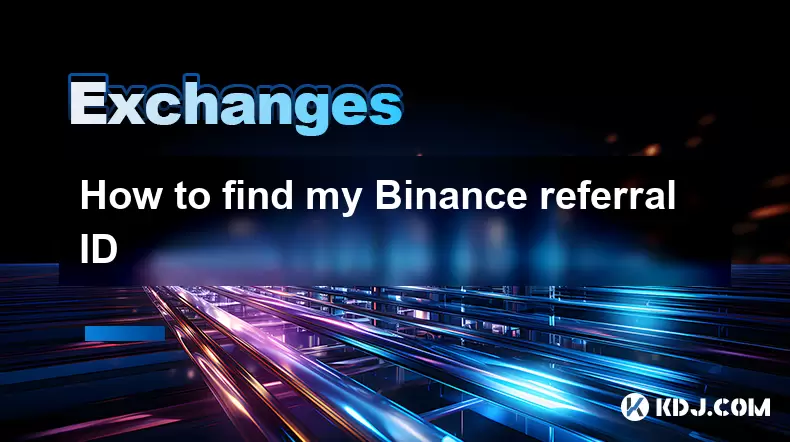
How to find my Binance referral ID
Jul 07,2025 at 06:29pm
What is a Binance Referral ID?A Binance Referral ID is a unique identifier assigned to each user on the Binance platform. This ID allows users to refer new traders to Binance and earn commissions from their trading fees. The referral program is an integral part of Binance’s ecosystem, encouraging community growth and rewarding active participants. Every...

How to recover a lost Binance account
Jul 07,2025 at 09:07pm
What Happens When a Binance Account Is Lost?Losing access to your Binance account can be a distressing experience, especially if you hold significant digital assets. This typically occurs due to forgotten login credentials, loss of two-factor authentication (2FA) devices, or compromised accounts. Understanding the exact reason behind losing access is cr...

How to trade options on Binance
Jul 08,2025 at 04:35am
Understanding Options Trading on BinanceOptions trading allows investors to speculate on the future price of an asset without owning it. On Binance, users can trade crypto options, which are derivative contracts that give traders the right—but not the obligation—to buy or sell a cryptocurrency at a predetermined price before a specific date. This form o...

How to get the Binance Visa Card
Jul 08,2025 at 07:36am
What Is the Binance Visa Card?The Binance Visa Card is a cryptocurrency-linked payment solution that allows users to spend their digital assets in everyday transactions. Whether you're purchasing groceries, booking travel, or shopping online, this card enables seamless integration of crypto into your financial lifestyle. Unlike traditional debit or cred...

How to read Binance charts
Jul 07,2025 at 08:14pm
Understanding the Basics of Binance ChartsReading Binance charts effectively is essential for making informed trading decisions in the cryptocurrency market. Before diving into technical indicators and candlestick patterns, it's important to understand the basic layout of a chart on the Binance platform. The default chart interface displays price moveme...

How to delete my Binance account
Jul 08,2025 at 06:35am
How to Delete My Binance AccountIf you're considering deleting your Binance account, it's important to understand the process thoroughly. Binance is one of the largest cryptocurrency exchanges globally, and permanently closing your account involves several steps. This guide will walk you through each necessary action to ensure a smooth deletion. Prepari...

How to find my Binance referral ID
Jul 07,2025 at 06:29pm
What is a Binance Referral ID?A Binance Referral ID is a unique identifier assigned to each user on the Binance platform. This ID allows users to refer new traders to Binance and earn commissions from their trading fees. The referral program is an integral part of Binance’s ecosystem, encouraging community growth and rewarding active participants. Every...
See all articles

























